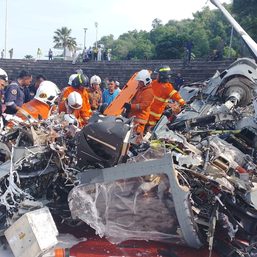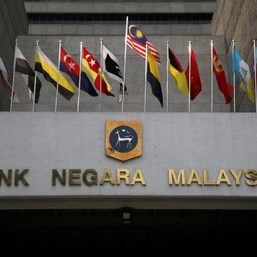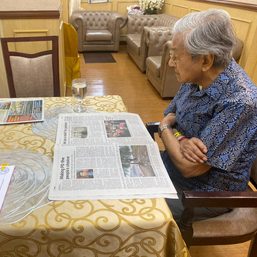SUMMARY
This is AI generated summarization, which may have errors. For context, always refer to the full article.

MANILA, Philippines – The National Statistical Coordination Board (NSCB) on Thursday, April 25, assured Philippine President Benigno Aquino II that there is no reason to doubt the 1st semester poverty statistics.
In an interview with Rappler CEO Maria Ressa on #Talkthursday, NSCB Secretary General Jose Ramon Albert said the numbers merely pointed to the percentage of the population of a country that is poor. He added that there was no reference given to the actual number of poor Filipinos.
The President on Thursday said he doubts whether the latest poverty numbers are reliable given that the population numbers have not been as accurate prior to 2010, when the Aquino administration assumed. The NSCB poverty data showed that poverty incidence in the first 6 months of 2012 was virtually unchanged from 2006 and 2009.
“With all due respect to my super boss (Aquino), the figures we generated were all from a sample survey. It had nothing to do with the census figures which he was attributing it to,” Albert said.
“The NSCB is another agency under NEDA (National Economic and Development Authority), NSO (National Statistics Office) is also another agency under NEDA. We did this in collaboration with NSO and our Technical Working Group on Poverty Statistics, an expert group,” he added.
Albert explained that the poverty statistics, particularly for the Autonomous Region of Muslim Mindanao (ARMM), which the President referred to in his statement, were not in absolute terms but mere percentages.
He said that these numbers only mean that the percentage of the poor population in ARMM remain high, without referring to the actual numbers of the poor. Albert added that the latest poverty statistics did not come out with the actual number of poor people in the country or in any other region or province.
“We only came up with poverty rates [in] percentages…The president might have said ARMM poverty levels went up [but] we did not say that. We only said in ARMM, the percentage of the population that’s poor continues to be very very high and it has not changed. We never said that the [absolute] numbers were higher or lower. We just said the percentages…are not statistically significant,” he stressed.
Too technical
Albert admitted that the nature of their work at the NSCB is very technical, making it difficult to understand the numbers they produce periodically. The NSCB, apart from crunching the poverty numbers, also come up with the country’s Gross Domestic Product (GDP) data every quarter.
He added that this is the reason why he is turning to various media to help Filipinos understand the meaning behind statistics.
But in so far as the latest poverty numbers are concerned, Albert said this only means that more needs to be done to address poverty in the Philippines.
“Statistics are politically agnostic,” he noted.
Albert said the government and even the general public face a big challenge in reducing poverty. He said the responsibility to lick poverty must not only fall on the shoulders of the government but also the private sector.
“There are challenges, there are very big challenges for government, not just government. I think we tend to forget that it’s not just only government’s responsibility to address the poverty situation. We have to start to realise that it’s not only the government’s concern, it should be everyone’s concern,” Albert said. – Rappler.com
Add a comment
How does this make you feel?





There are no comments yet. Add your comment to start the conversation.